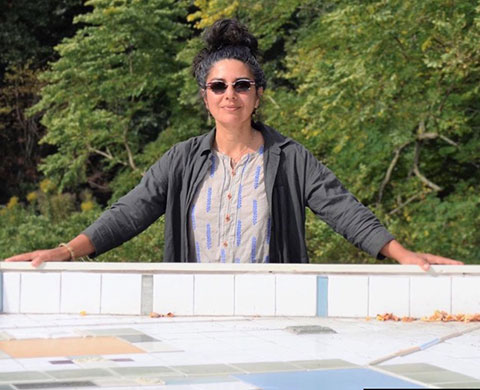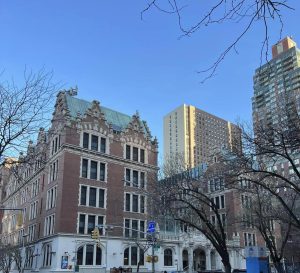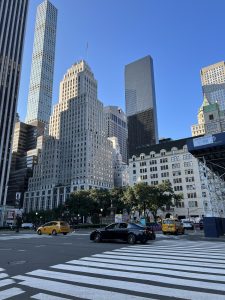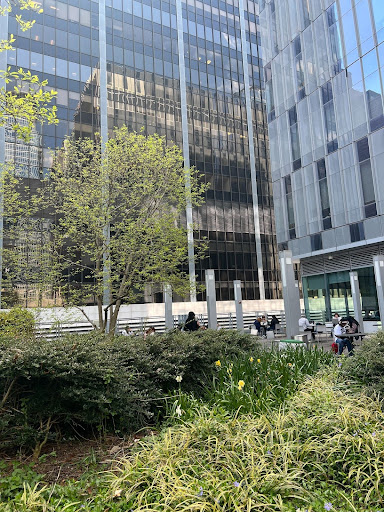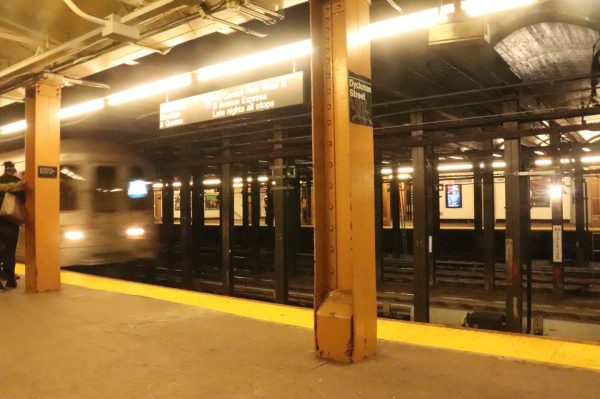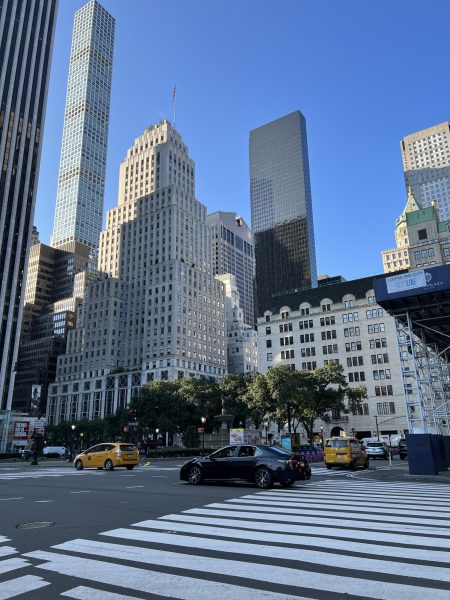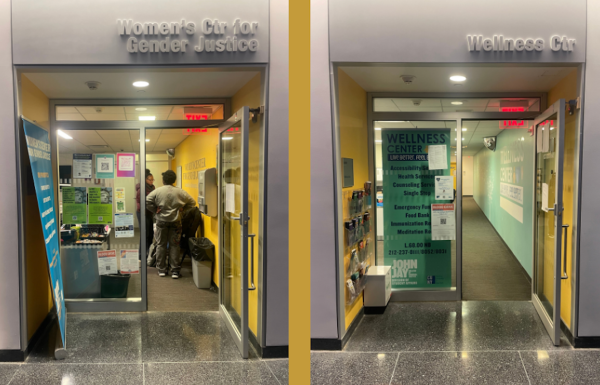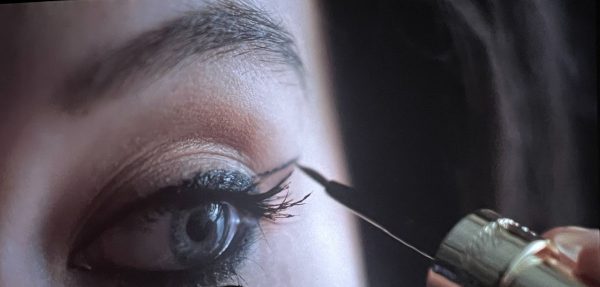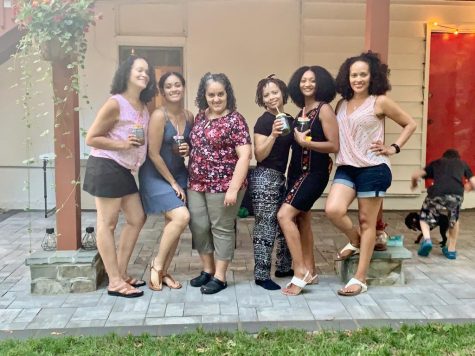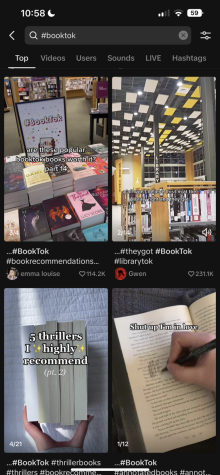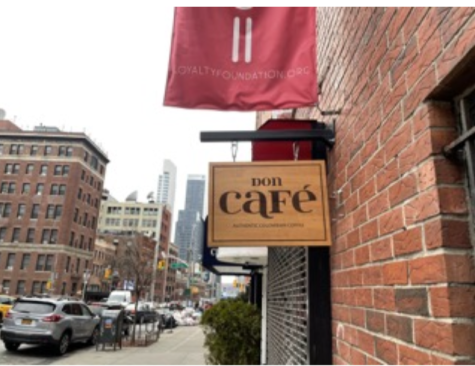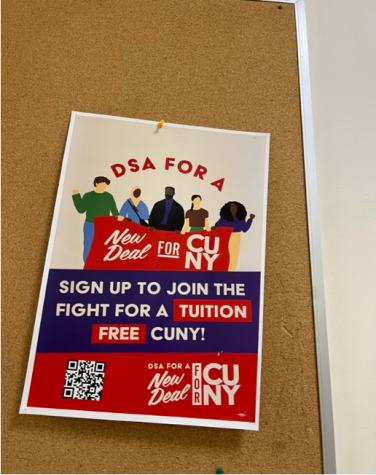Bahar Behbahani Reflects on Her Journey to Becoming an Artist
Today’s look into the work of renowned New York Artist, Bahar Behbahani.
May 15, 2021
For years, New York City has been known for being the host for a wide variety of artists of different races, backgrounds, and ethnicities. Bahar Behbahani’s work gained recognition for her community-based work, cultural issues, and acknowledgment of women’s issues in society.
According to her website, in 2003, Behbahani moved from Tehran, Iran to Brooklyn, New York where she decided to pursue her career in art through multiple outlets such as painting, video, installation, and performative talks.
Her father was a writer for an Iranian puppet show named, “School of Mice.” Her uncle and aunts were musicians and puppeteers as well as many other family members who enjoyed painting.
Behbahani’s Iranian-born background is a very important element of herself that she incorporates into her projects.
She is a woman of color who has experienced and witnessed a fair share of injustice throughout her career.
The process of creating these set pieces that tackle issues in today’s society is by no means an easy task. Many enthusiasts share a belief that creating art is always an enjoyable process filled with constant satisfaction and achievement.
“It’s not as dreamy as you sit behind your canvas and paint whatever you want, at least not for me because I’m thinking of many sociopolitical issues for example, and environmental issues when I work,” Behbahani said. “All those, those are painful issues for our planet, for our people, for the injustice toward people of color like minorities, in any case, genders issues.”
“These are not things we think of as joyfully. So in a way, as an artist, each artist has a different strategy. But the process that I get to make these issues inviting and welcoming and accessible to people, that’s a very struggling, challenging process.”
Behbahani also teaches drawing classes at John Jay College of Criminal Justice.
Within these classes, her students partake in discussion boards that spark conversation in various topics following the reading of a weekly assigned article, including discussions on drawing being used as an outlet, women’s artwork throughout history being uncredited, and approaches to analyzing art.
“I think that it’s very important for everyone in the classroom to take time and for all of us to give their opinion on the issues the Professor brings up in her articles,” said Marcus Roman, an Art student at John Jay. “There was one article that opened my eyes on how men dominate the art industry and wrote history in their favor.”
Behbahani is known for her community-based works in projects such as the “I Can Drink Stars, 2020” landscape where Jameel Ahmad and artists of varying cultures and backgrounds help create a mosaic/tile structure to represent the history of the Indus Waters Treaty. The water-sharing treaty between India and Pakistan from 1960.
Themes of division are seen within the center of the sculpture, representing the jurisdiction of water that Pakistan owns over the western region. Debates over the use of Water and limiting natural resources from populations have been discussed for years.
This is just one of many examples of Behbahani’s dedication and commitment to doing community-based projects that shed light on political issues that many American citizens never hear on their regular news outlets.
“How we resist is the way we show up, you know. We show up, we do the good work. We have to raise not only our voice, individually but we have to shine on others too. That’s why these days I lean towards community-based work. I work with the community of color and immigrants and minorities. There are stories not seen and heard as mainstream stories.”
Bahar Behbahani, like many Americans during the Covid-19 pandemic, has taken time to reflect and plan for their future while forced to face quarantine.
She hopes to continue her creation and display of public art, with visions of a Persian garden that can serve as a platform for other stories.
“I also spend a lot of time contemplating and preparing another public artwork as part of my Creative Capital grant. It’s going to be a very active garden, beautiful, with the design and philosophy of a Persian garden,” Behbahani said in a recent interview with KodaLab. “The garden will serve as a backdrop for painful conversations, as a soothing platform to understand others’ stories better. I see a garden as a place of resistance, and a plant as a parallel way of living.”


